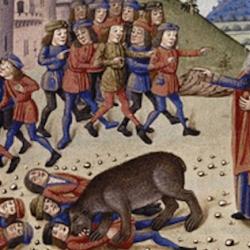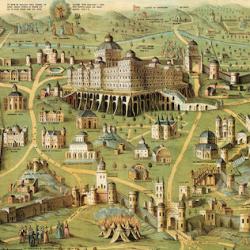There are a number of “ecumenical” movements in 1-2 Kings. The first is pursued by Rehoboam, who attempts to reunite the 12 tribes by force and is warned off by a prophet. The second, more successful and elaborate example is the Omride dynasty, which rules Israel for several generations and also successfully establishes marriage alliances with the Davidic line. The third is that of Jehu’s dynasty, which appears to gain effective hegemony over Judah following the war between Jehoash of Israel and Amaziah of Judah (2 Kings 13). The latter two are movements for union, but would result in an Israel united around Bethel’s calf shrines. These are false reunions.
Hezekiah (according to Chronicles) and Josiah both unite Israel in Jerusalem around the worship of Yahweh, and Josiah especially extends his reform program well into the Northern kingdom. This is a true reunion. But the true reunion is ultimately no more successful than the false reunions. After Josiah, Judah rapidly tumbles into exile.
The only effective union for Israel and Judah was their union in exile. They are tied back together in a single nation only by being united in the grave (1 Kings 13).















